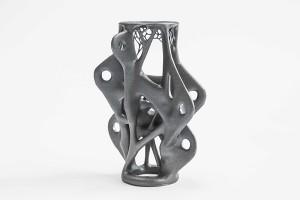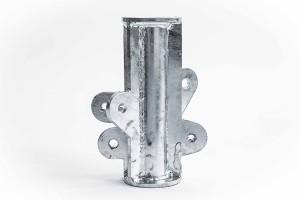Arup, an English multinational engineering firm, uses 3D printing to manufacture pieces and components of steel structures in complex projects. The company cites the Beijing National Stadium (“bird’s nest”) and London’s Gerkhin as “complex projects” on which they’ve worked in order to illustrate what kind of projects could see 3D-printed parts being used in the future.
The same firm has conducted research that shows that 3D printing of structural steel components has the potential to reduce costs, waste and carbon footprint.
“By using additive manufacturing we can create lots of complex individually designed pieces far more efficiently,” said Salomé Galjaard, Team Leader at Arup. “This has tremendous implications for reducing costs and cutting waste. But most importantly, this approach potentially enables a very sophisticated design, without the need to simplify the design in a later stage to lower costs.”
3D printing is, at the moment, still more expensive than the traditional manufacturing methods.
The company uses a steel node as an example. 3D printing a steel node that could be used for building bridges or hold up electric cable lines is now possible; however it’s still more expensive than using the traditional methods. Arup says that it would potentially use 3D printing to manufacture parts that could be used in the ‘built environment’, an engineering term that encompasses anything in the ‘human-made’ setting.
Arup is partnering with different firms in order to exploit the full potential of steel 3D printing, including WithinLab, CRDM/3D Systems and EOS.
EOS has proven in the past that 3D printing of structural steel can reduce material consumption by 75% and CO2 emissions by 40%. 3D printing has, according to the firm, the potential to outperform any other traditional method of manufacturing structural steel in terms of sustainability, energy consumption, CO2 emissions, raw material efficiency, recycling, transportation of raw materials and manufactured goods, and many other dimensions. EOS claims that 3D printing slightly outperforms traditional methods in energy consumption; however they claim that the main advantage of 3D printing over traditional manufacturing methods is in the amount of material used. They say that manufacturing parts of structural steel using 3D printing methods only uses the amount of material which is in the steel part itself and not more, as opposed to casts.
Development work is still ongoing. Arup and its partners are currently working at reducing costs linked to 3D printing. Discuss Arup’s 3D printing applications within the construction industry in the 3DPB.com forum thread for 3D printed structural steel.
Subscribe to Our Email Newsletter
Stay up-to-date on all the latest news from the 3D printing industry and receive information and offers from third party vendors.
You May Also Like
US Army Corps of Engineers Taps Lincoln Electric & Eaton for Largest 3D Printed US Civil Works Part
The Soo Locks sit on the US-Canadian border, enabling maritime travel between Lake Superior and Lake Huron, from which ships can reach the rest of the Great Lakes. Crafts carrying...
Construction 3D Printing CEO Reflects on Being Female in Construction
Natalie Wadley, CEO of ChangeMaker3D, could hear the words of her daughter sitting next to her resounding in her head. “Mum, MUM, you’ve won!” Wadley had just won the prestigious...
Blue Laser-powered M600 3D Printer Launched by Meltio
Founded in 2019 as a joint venture between Additec and Sicnova, metal 3D printer OEM Meltio develops and manufactures high-performance and easy-to-use metal 3D printing solutions that use its patented wire-laser metal...
3D Printed Storage Tanks Cut Material Costs by 25%
In a previous article, “Concrete Dreams: Let’s Print Money, Not Houses,” we discussed how the spotlight on 3D printing homes might be misplaced. Bollards, pedestrian bridges, and concrete tanks could...
































